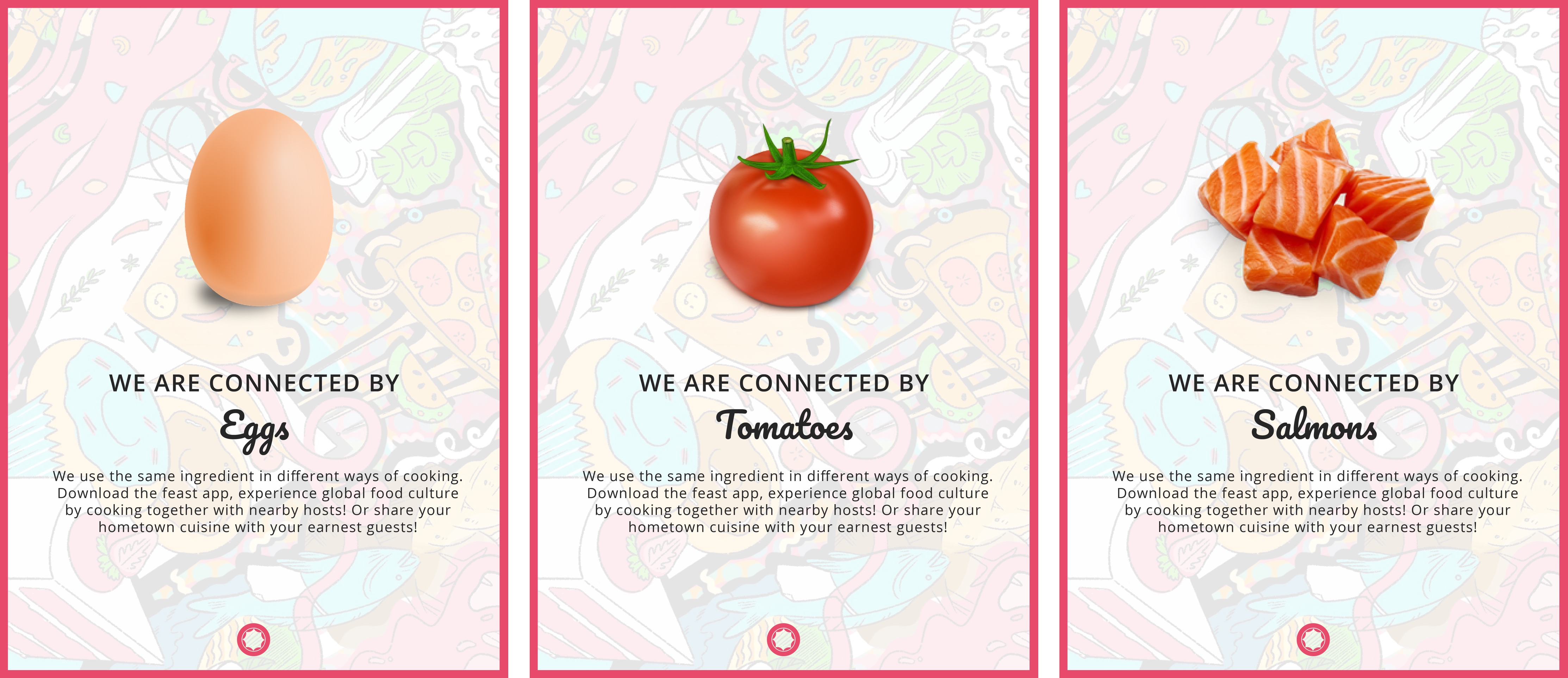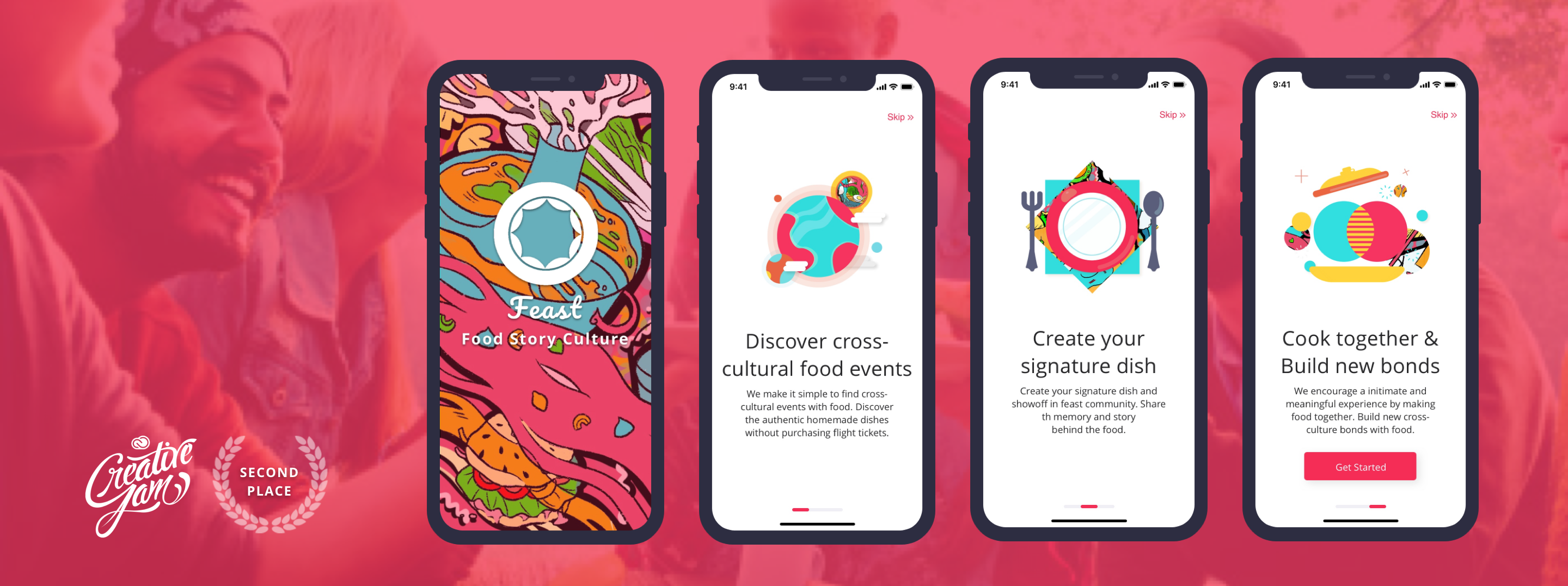
UI, UX, Research
2019 Spring
Feast connects people via foods, stories, and cultures.
The Feast App idea emerges from a 3-hour Adobe Creative Jam Design Hackathon. The challenge is to design an App that connects social cohesion. Our Team built a draft wireframe to present our idea. After the Adobe Creative Jam, I carry on the concept and validate our assumptions in my individual project.
Creative Jam Team:
Kewei Zhu, Zoe Liang, Fairy Shih, Donghee Kim
Judge's feedbacks:
“I like the concept behind the feast. The did a great job on UI, and the flow is pretty clear to me. It makes me hungry, which is excellent!”
– Alice Bybee, Senior Design Manager at Slack
“I think the concept is great. Food is connecting! Team 7 did a great job reaching the target audience.”
– Lauren Flores, Graphic Designer at Hasbro
"Food for us comes from our relatives, whether they have wings or fins or roots. That is how we consider food. Food has a culture. It has a history. It has a story. It has relationships. "
– Winona Laduke
THE CHALLENGE
How might we create a meaningful experience by connecting people from different cultural backgrounds?
• Different culture groups do not often interact with each other, but creating conversations between groups provides meaningful impact and insights.
• Through the Internet the new relationships often have superficial results, and we feel more isolated than ever.
• We hang out with friends with a similar background. But there are not many opportunities to reach communities in a different culture.
CONCEPT
Food Connects People
Delicious food accentuates memorable moment and establishes new relations.
Food cheers people up and brings them together. In every culture, people celebrate important events like marriage, birthday, graduation, and festivals, with gathering and food sharing. The beginning of the concept rose from my passion for cooking. I love to host people with the Chinese cuisines my mom taught me. And that is how I made friends when I came to the US in 2012. If you think about life’s different occasions, food is most likely at the center of each one. Food is the vehicle through which we build new relations, communicate sentiments, express our creativity, and create memories.
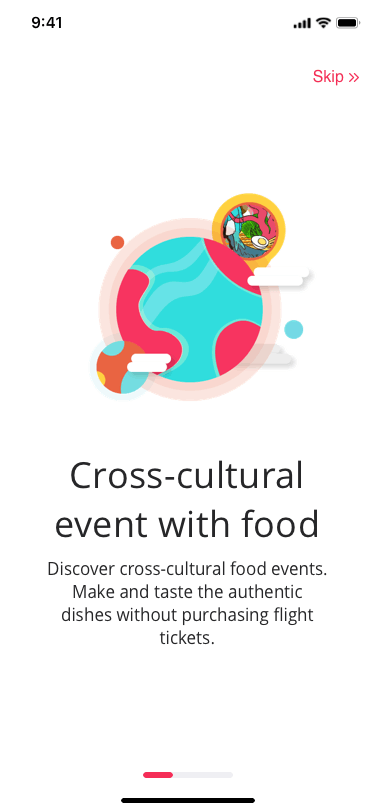

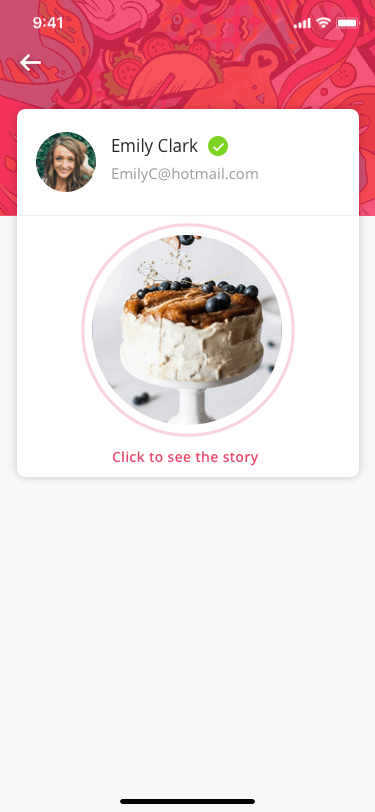
RESEARCH
How do people build new relationship currently?
• 61% of teens on social media make friends online (Pew Resaerch Center 2017)
• Most close relationships are from families, schools and works.
• Text messaging is a key component of day-to-day friend interactions.
• Most people don’t seek out strangers to talk to on Facebook; instead, they communicate with a range of acquaintances and close friends. (facebook research 2016)
According to secondary research, people become more conservative in recent years. I want to know the reasons beneath the data and generate a picture of the user in San Francisco. Also, building empathy between users' perspectives of food. With these in mind, I conduct user interviews.
Questions:
1. Could you describe how you meet a recent new friend? How do you build relationships?
2. Do you want to meet people from different cultures? Why or why not?
3. How do you feel to meet strangers online/offline? Why?
4. What's the most memorable time in your life? Why?
5. What is the favorite food you had or want to try so far? Why? (What is the story behind the food?)
6. Do you like to cook? Why?
INSIGHTS
People are passionate about trying different food. And they are more willing to learn the culture and stories behind and make new connections than I assumed.
• Food triggers deeper memories about feelings and emotions, from the internal states of the mind and body.
• People are proud of their culture. Sharing food is a way to show off.
• People have a concern about meeting strangers. Building a trust system is essential.
• Compared to other gathering events, people want to a casual
and intimate experience.
The design goal is to connect people, builds new relationships and creates a memorable moment. The feast is not only a meal sharing or friends hangout app.
PERSONAS
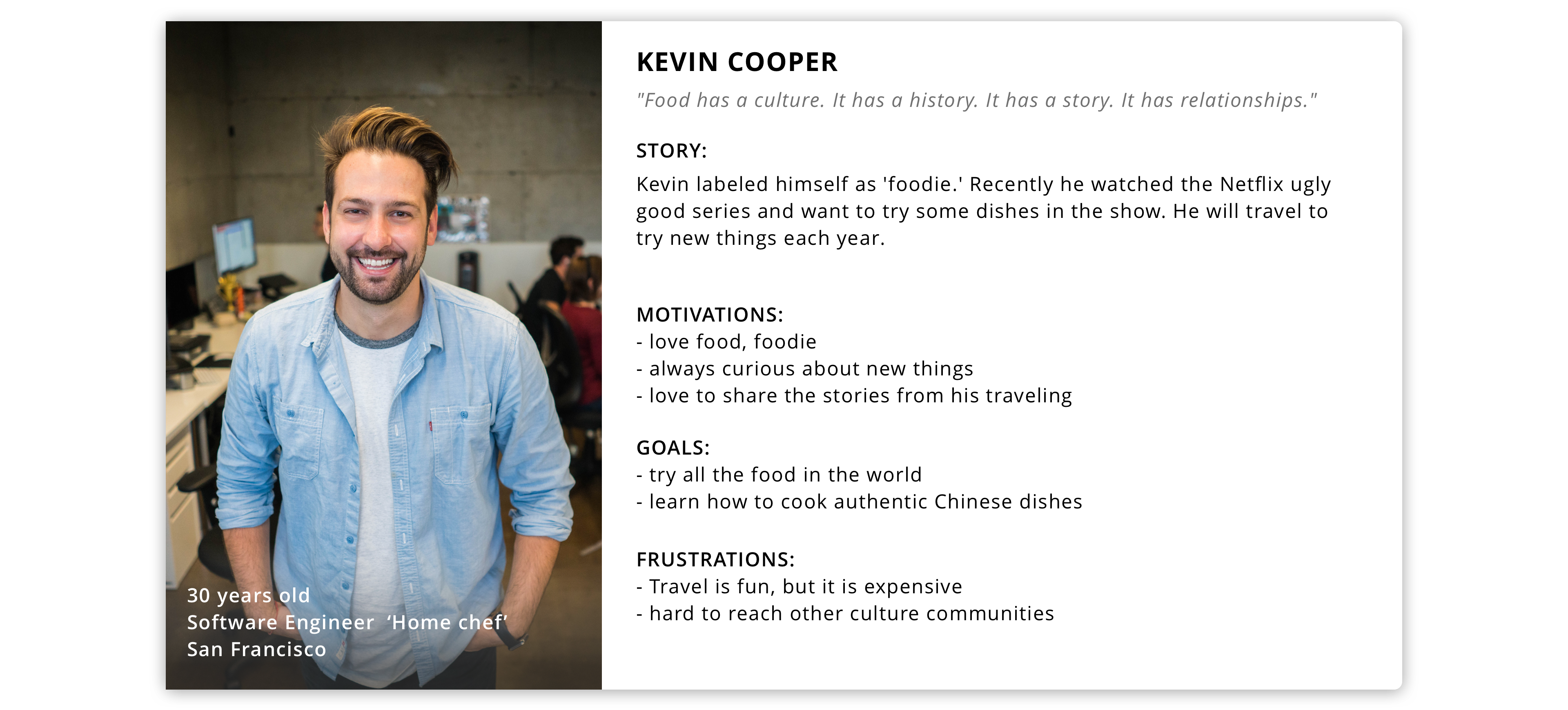
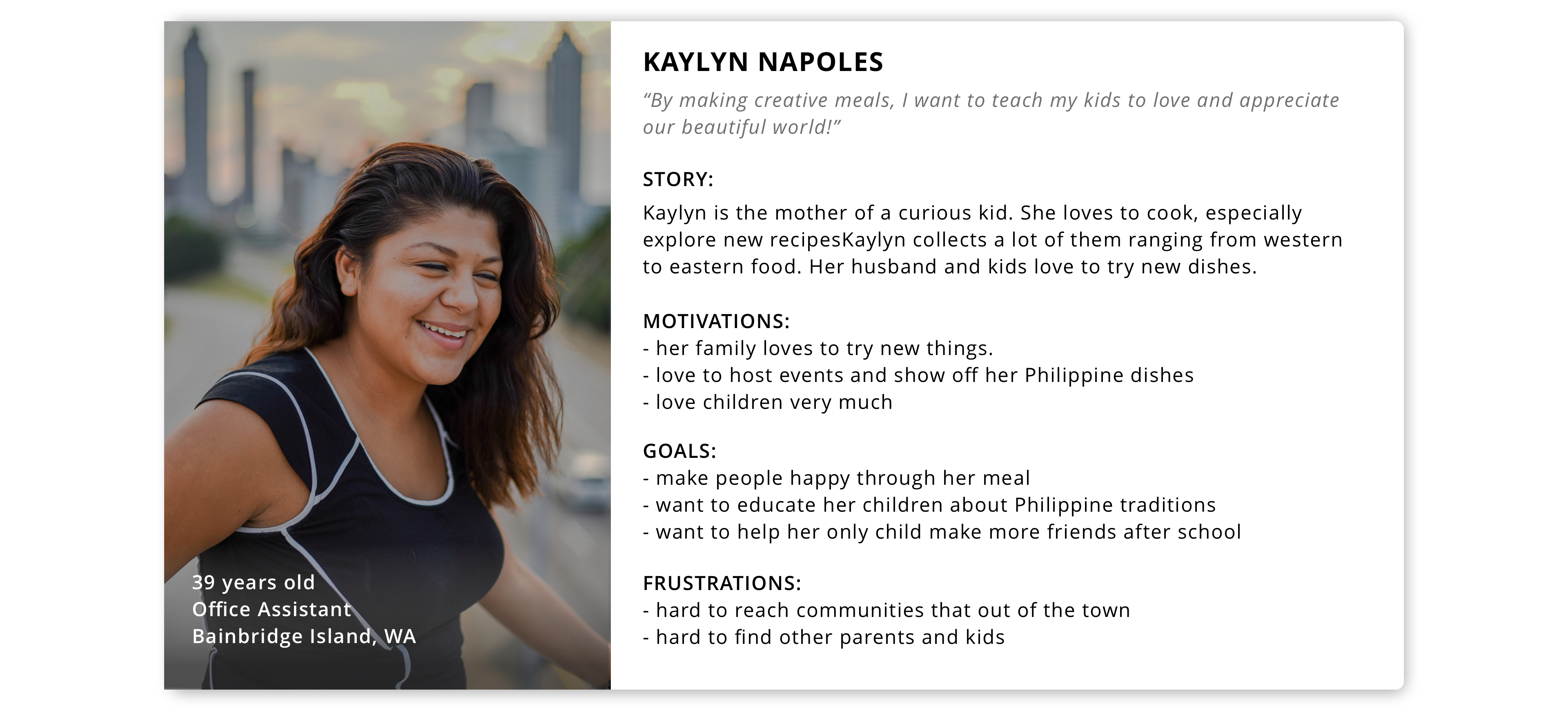
FIRST STAGE DESIGN & IDEATION
Main Features based on insights
• Social media sharing to show off and get more followers
• Inviting friends to go events together
• Rating and Reveiwing
• Home hosting environment, share the food stories and recipes with visitors
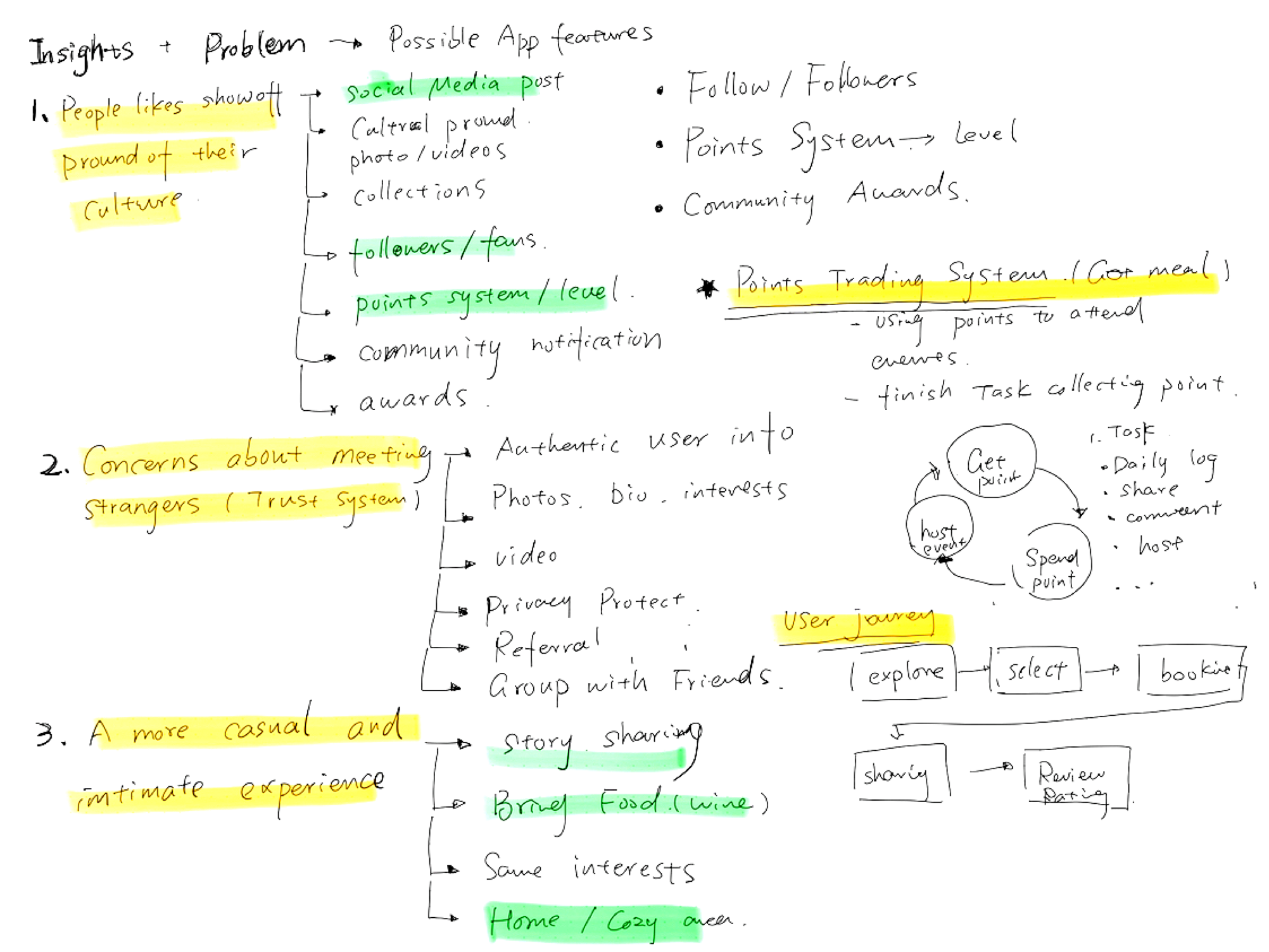
Information Architecture
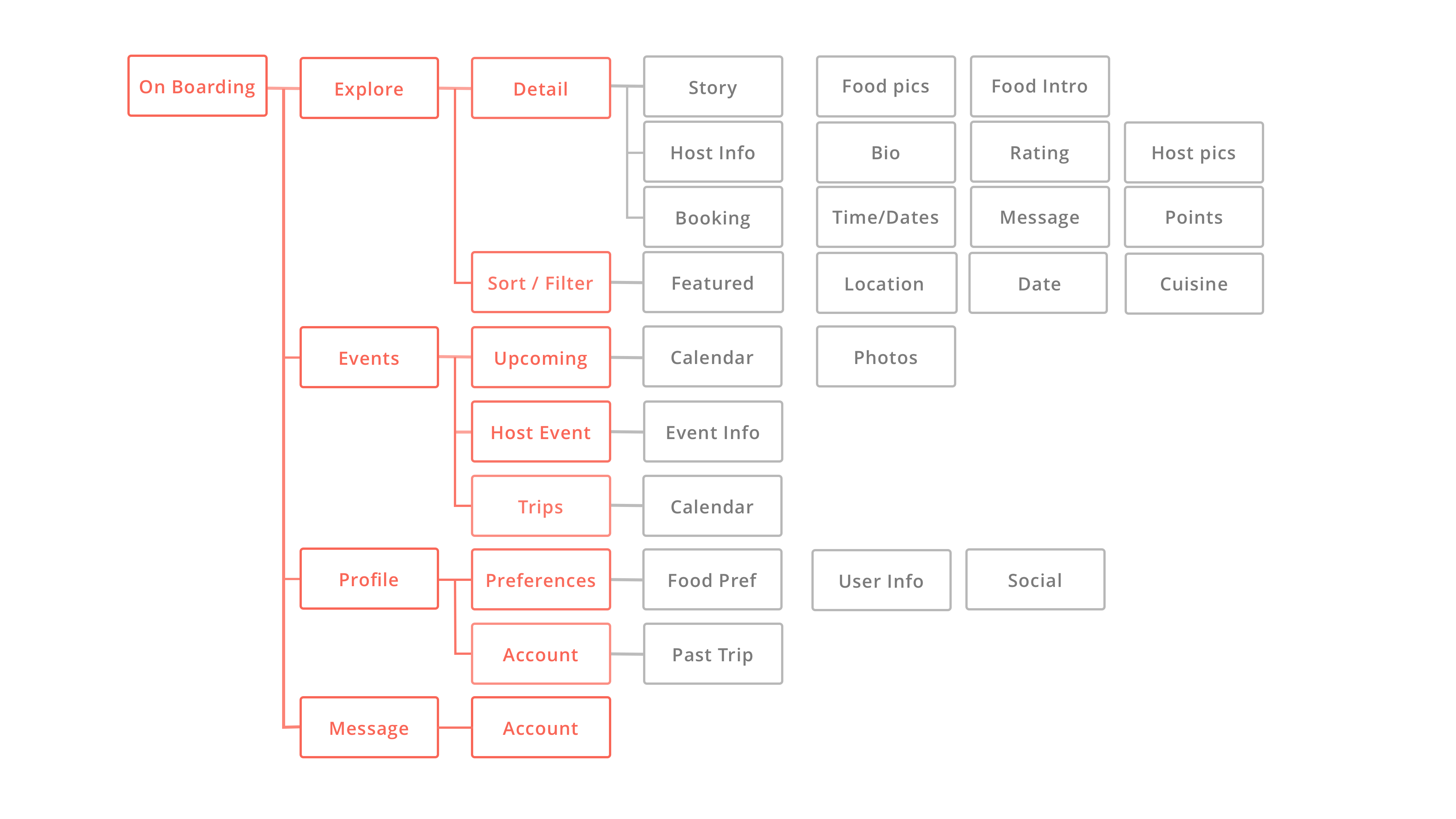
UI Sketches

Initial Wireframe
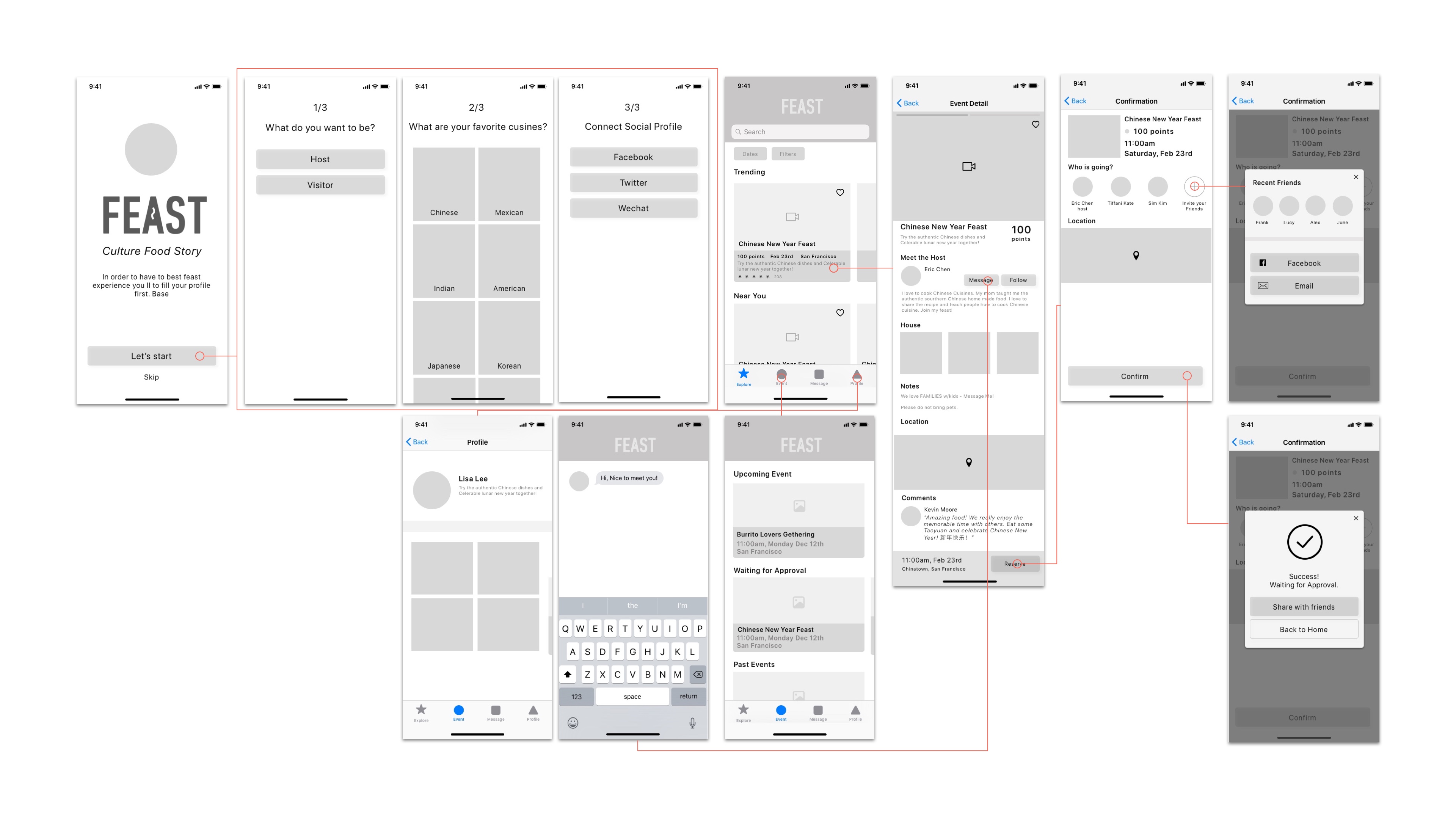
TESTING & CONCEPT VALIDATION
Test method:
We host a homemade food party!
- Paper prototype
- Simulate the Experience
- Engaging Observation
- Role play as visitor / host
Test Goal:
Validate the assumptions and concept.
- Validate the concept
- follow the user’s journey and identify the pain point
- App usability testing
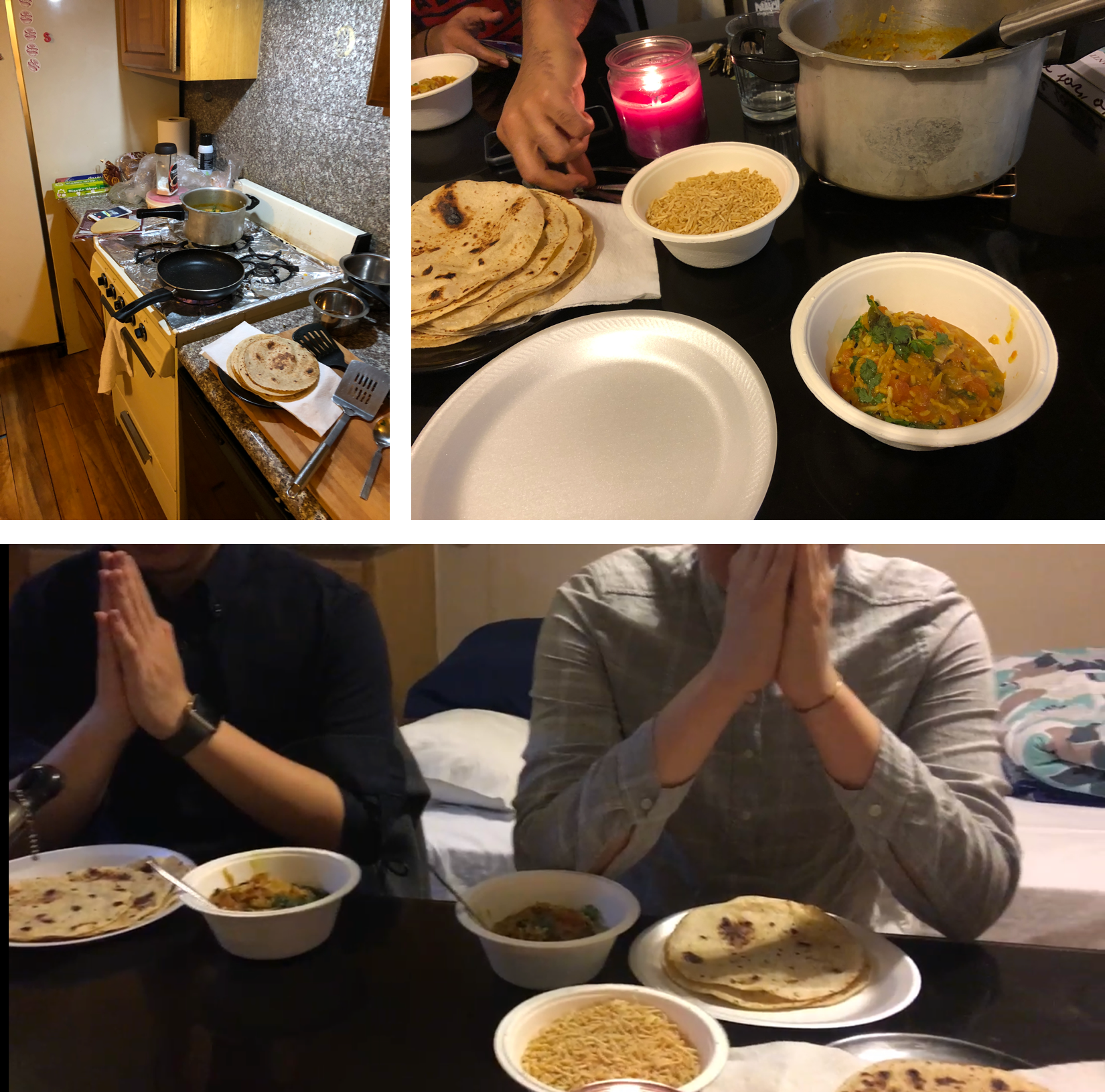
RESULTS & INSIGHTS
Cooking together creates intimate time
We had an excellent time to help host cook the dishes. The visitors have a strong motivation to learn to cook Indian meals. When people work together, they become more close.
Pain for hosts to prepare everything
Thought hosts have the motivation to invite people, and they need to spend more time on shopping materials, preparing food and cleaning the room. Current design does not consider host’s perspective.
Time and money is a huge consideration for both
hosts and visitors
Money is also a big consideration. In some cultures, it is impolite to ask guests to pay the bill when hosting guests. However, it is also a pain for the host to pay for everything. Current point system could not replace the money.
Identify the host's room takes time
We lost in the building at first. Then we called the friends to receive us at the main gate.
ITERATION
Each user creates a signature dish
The signature dish represents every user. Users could both teach and learn other's signature dishes. It will show in the user's profile.
Feast encourages making signature dishes together instead of eating together
Make food together events will show at the top of exploring page.
Highlight the price and duration
Two information will be a high visual level on the event page.
Attractive key visual signage
I will design signages like door tags and visitor badges to help users find the place faster. Maybe use illustrations to highlight the brand identity.
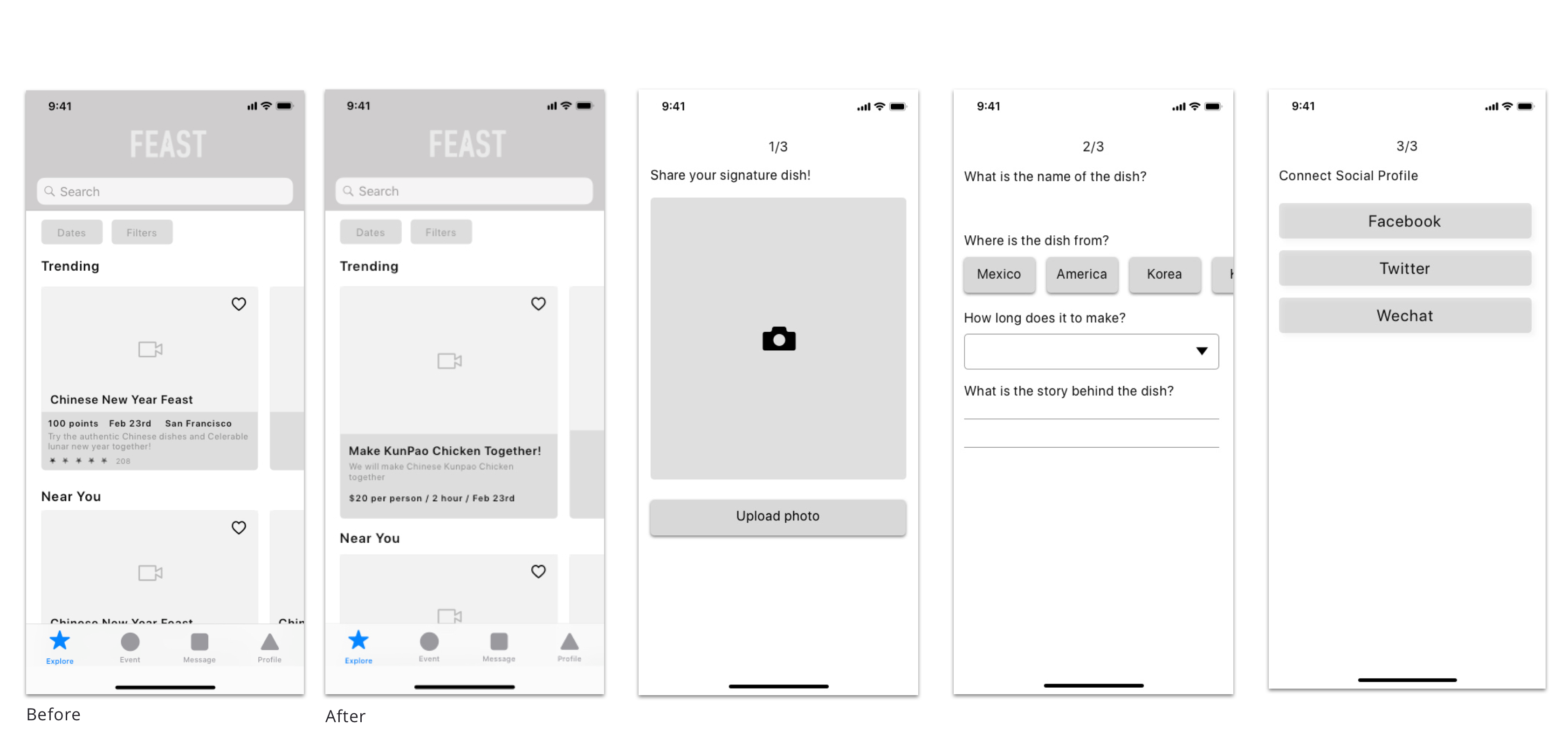
TESTING ROUND 2 / USABILITY TESTING
Goal:
To test the user flow and the usability of interface including visual hierarchy, Flexibility, efficiency, etc.
Test method:
- Invision mock-up
- Passive observe the user to finish the task
-Simulating using scenario
Findings:
- All testing users have not thought about their signature before.
- Need next button in create my dish task
- one user lost in home page due to the unclear navbar
- Press the event card to the next page is not intuitive for one user
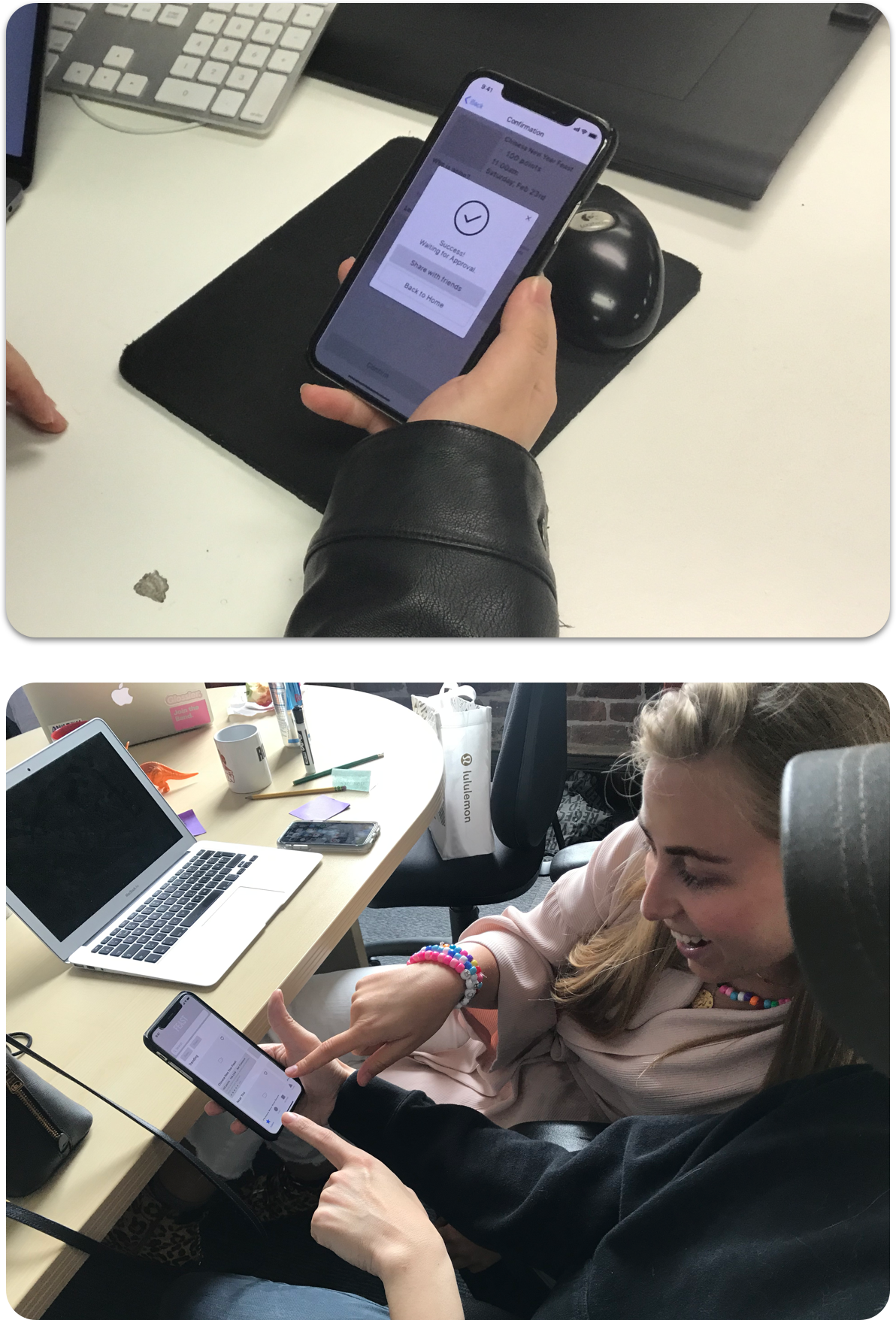

PROOF OF CONCEPT
Task 0
On boarding
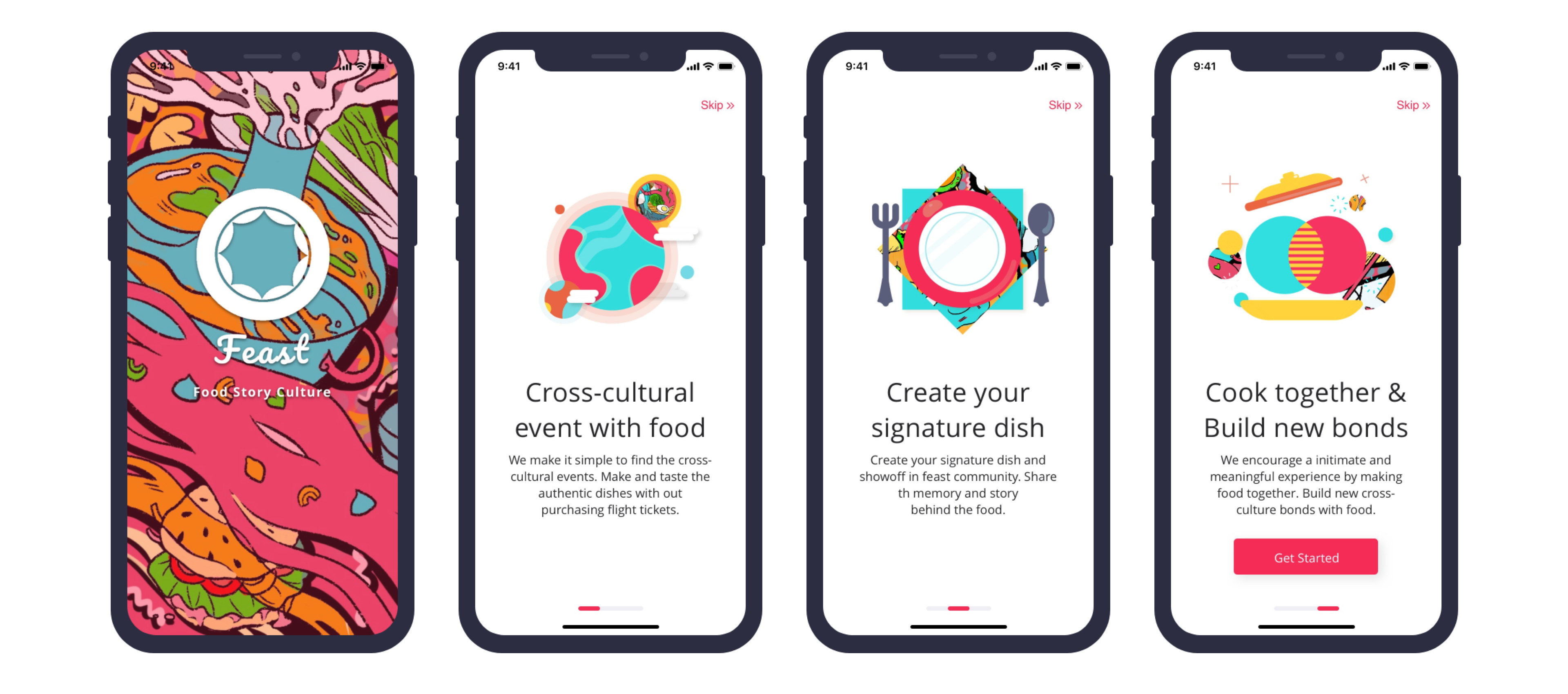
Task 1
Create my signature dish and story
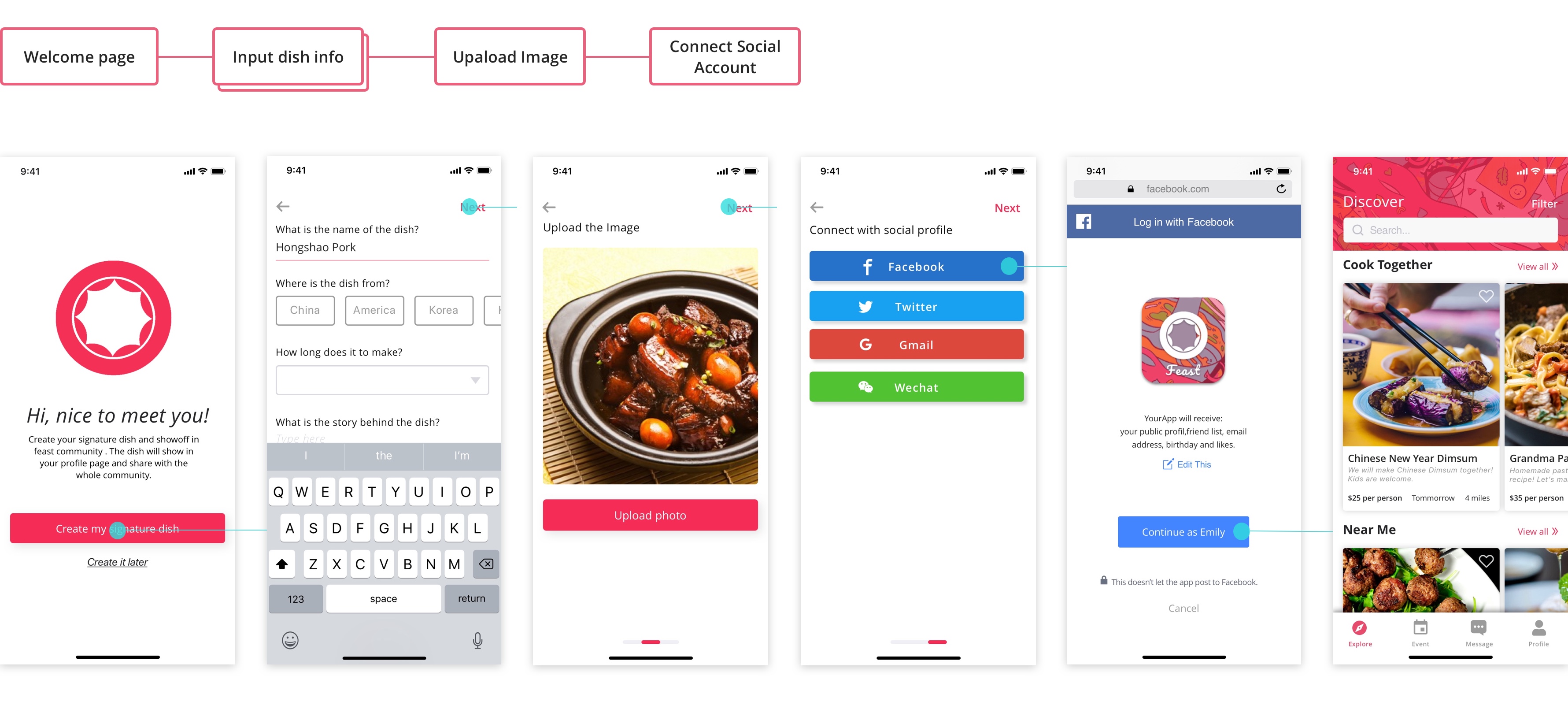
Task 2
Explore feast events and reserve
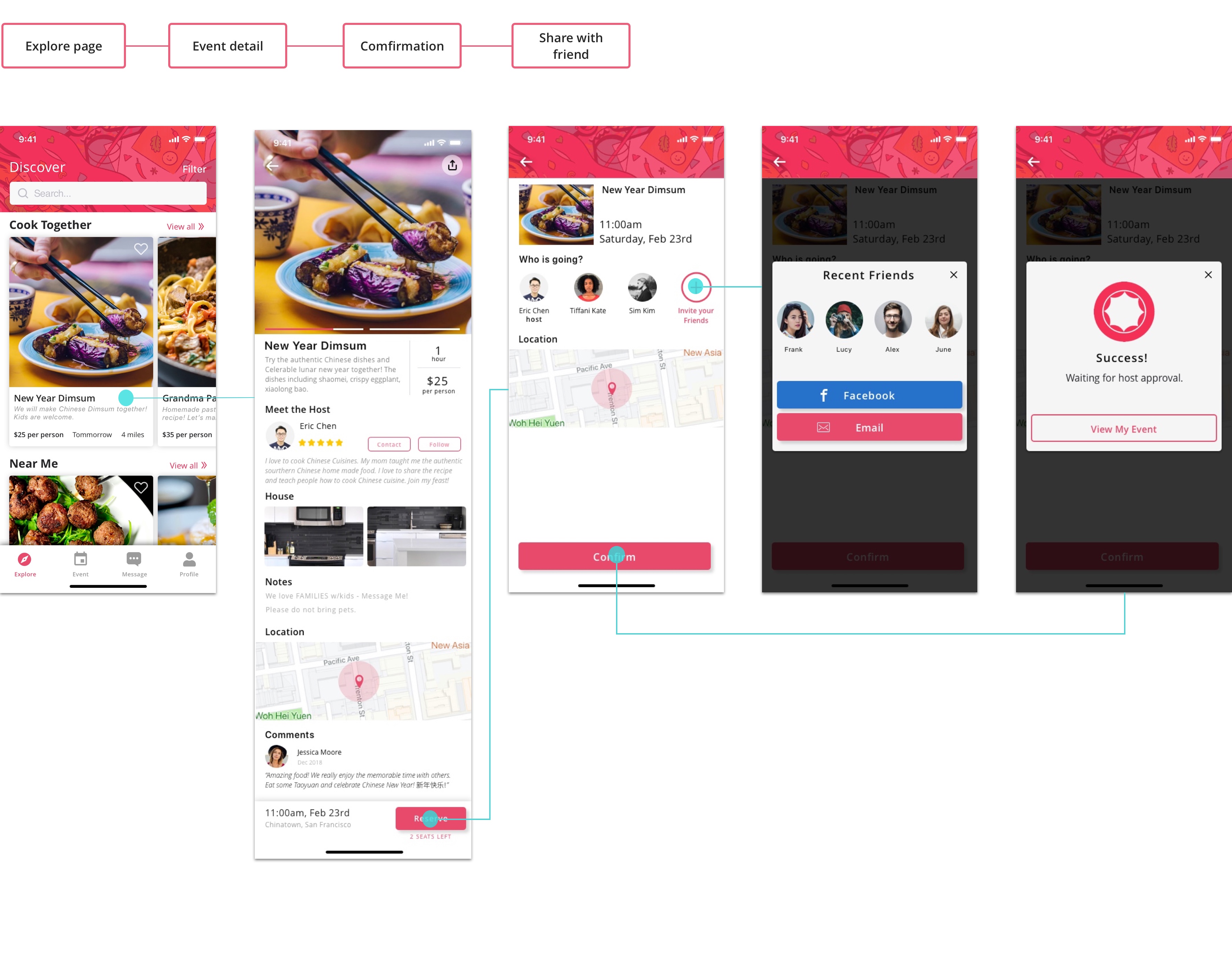
Task 3
Go to event
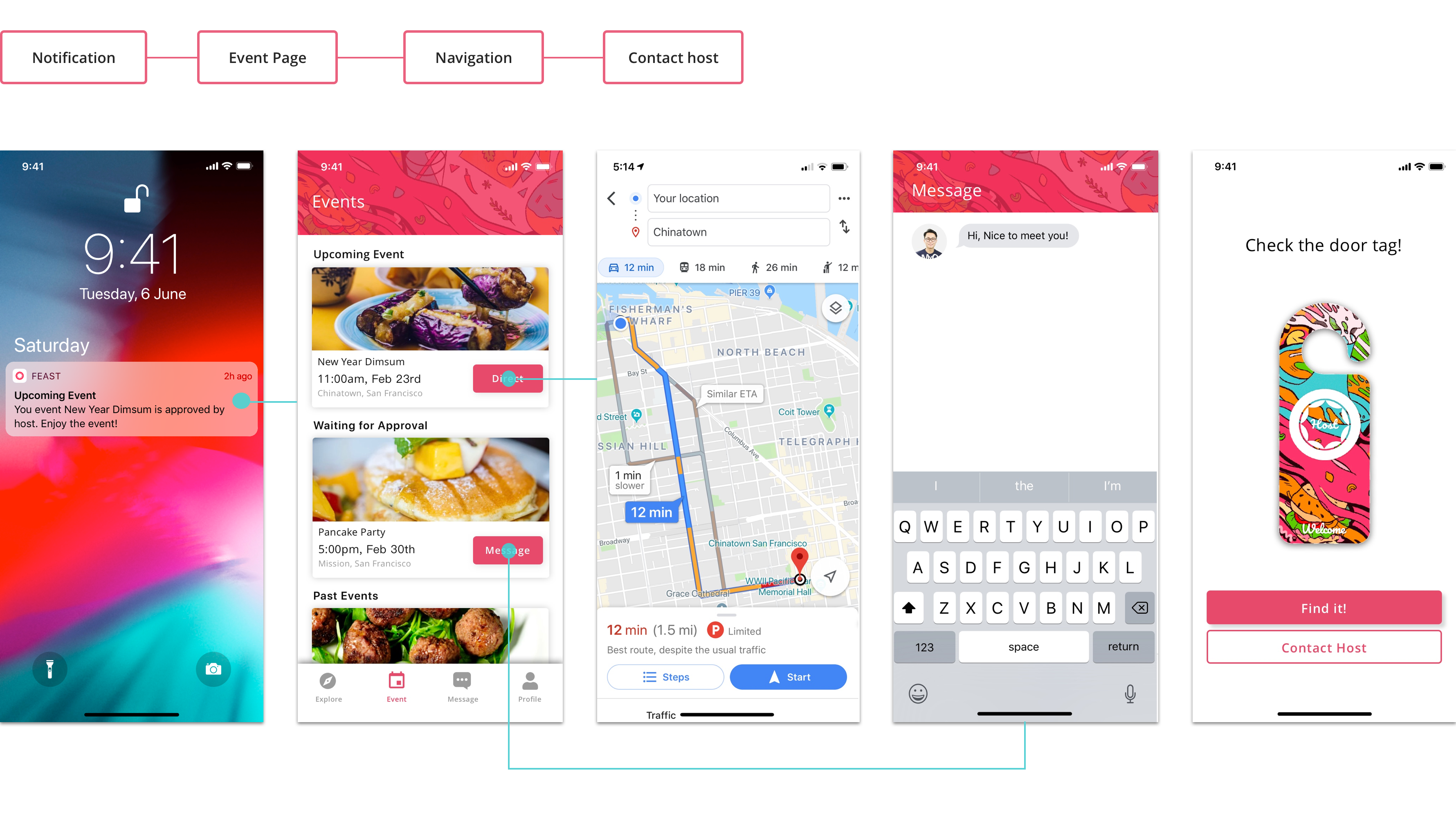
Extra Screen
Login, Message, Profile
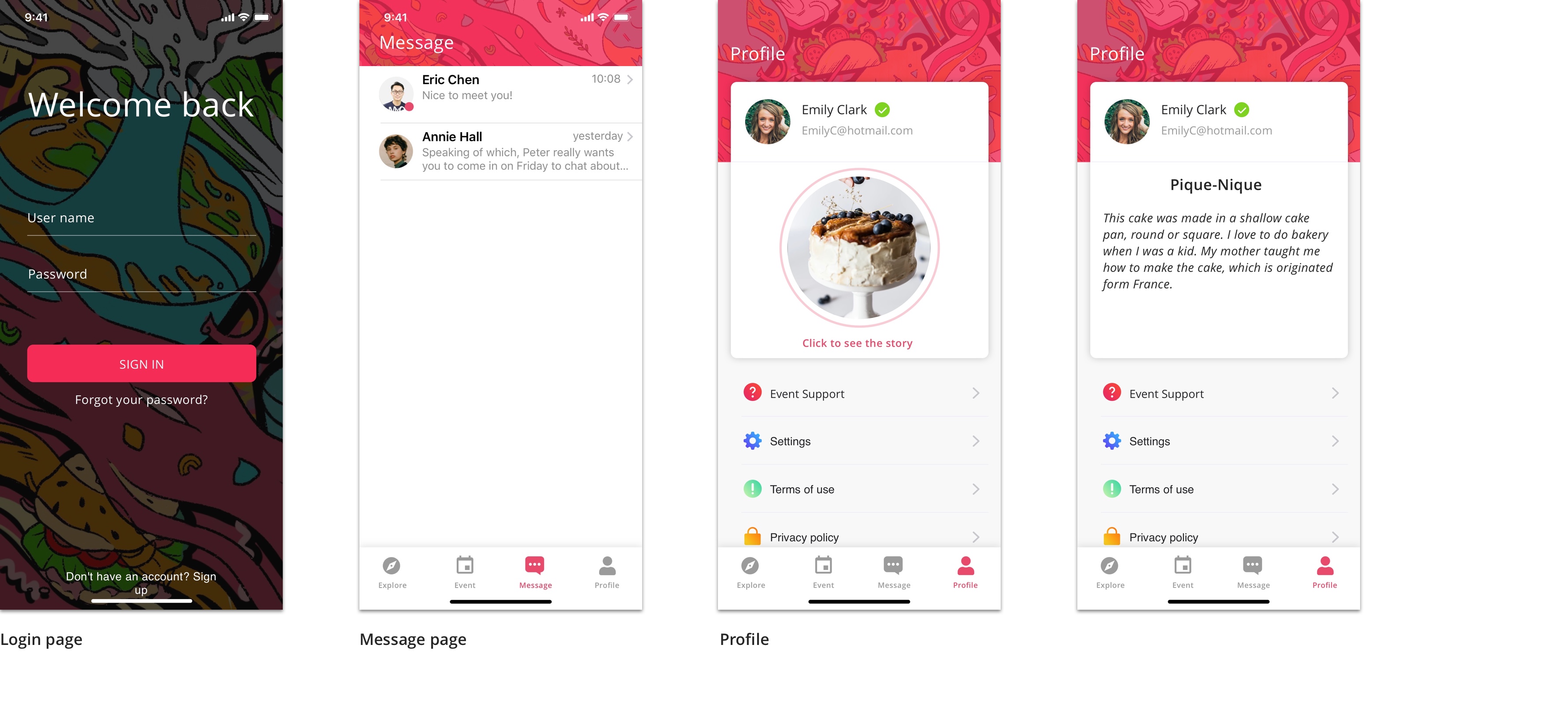
PROTOTYPE
Moodboard

Design Principles

Logo

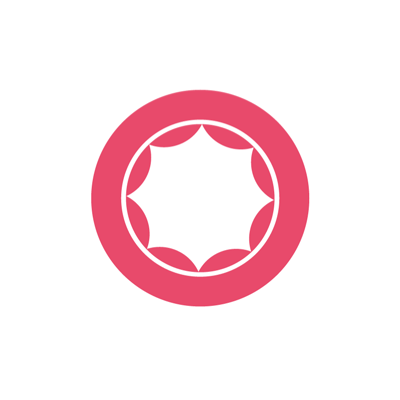
Welcome

Alert

Loading

Splash

Opening
Colors

Typography

Icons
Illustrations

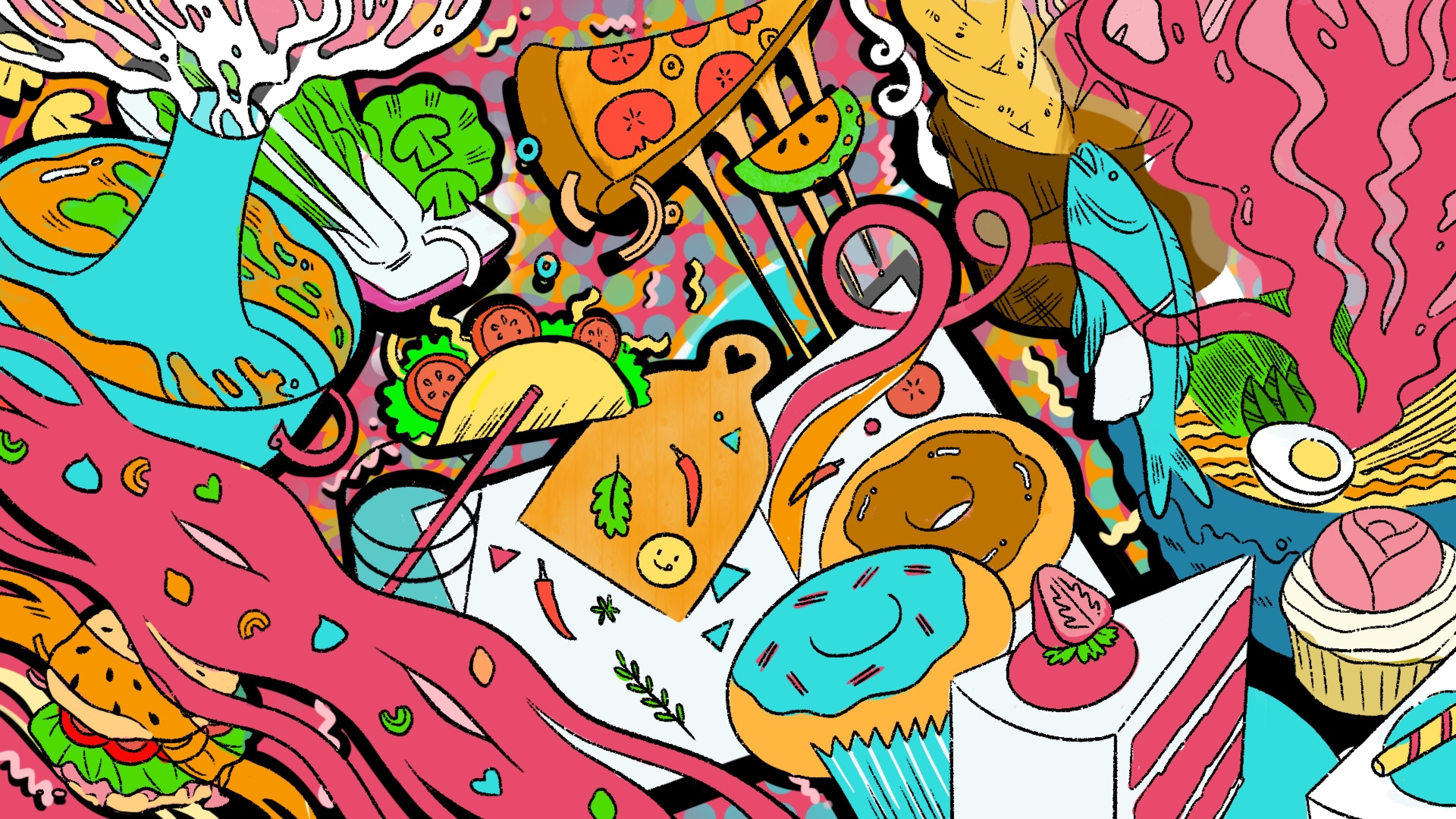
Signage

SWAG
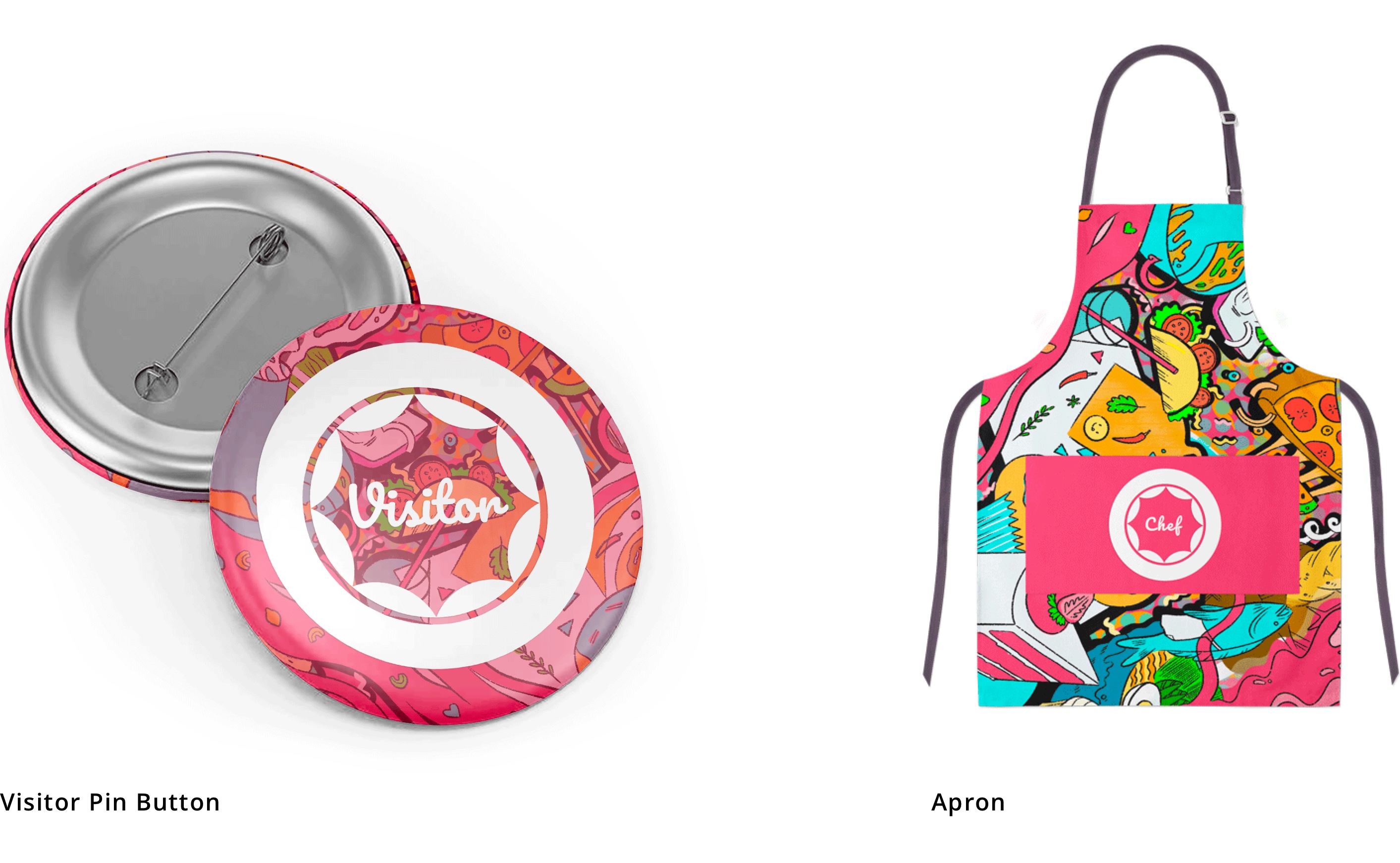
WHAT IS NEXT
Host vs visitor
As the feast were emphasizing sharing, I want to make different than experience hosting app by trying to reduce the idea of host and visitor. Because when user tend to share less when they are visitors, especially they pay for the experience. For the next prototype, I try to create a "potluck" event, and everyone brings their signature dishes together. I assumed it would generate more connecting opportunites.
User growth and revenue
As I am digging deeper, I find the target audience is more extensive than I imagined. Parents want to educate their kids. Old generation wish to pass the homemade recipe to young generations.
How to build a positive offline community?
A community is essential for user growth. It satisfies the users’ motivation, which is to show off their culture. Some features might bring in next:
- Honor system including Badges, certifications, monthly cooking star, etc.
- Regular meetings
- Sharing cook lessons
CAMPAIGN IDEA

Feast x Safeway campaign
How can we bring the feast app to the audience's radar and increase user engagement?
According to BJ Fogg's behavior model, there must be a trigger for the user to build a behavior habit. Though cooking is a habit that the feast app targets, it needs a more impactful advertising strategy that boosts user growth. That is where the Feast and Safeway partnership comes in. Because doing grocery is one of the daily nroutines that exposes the users to our advertisement.
Insights:
Though people cook different cuisines, we use similar ingredients. I asked friends from the diverse culture how they buy ingredients for cooking. Except for some special sauce and spices, They all get supplies from supermarkets like Safeway, Whole Foods and Trader Joe's. So, what if we put the advertisements on food shelves? This will not only increase the Feast app exposure but also attracts people to purchase products, as well as raising revenue for Safeway.
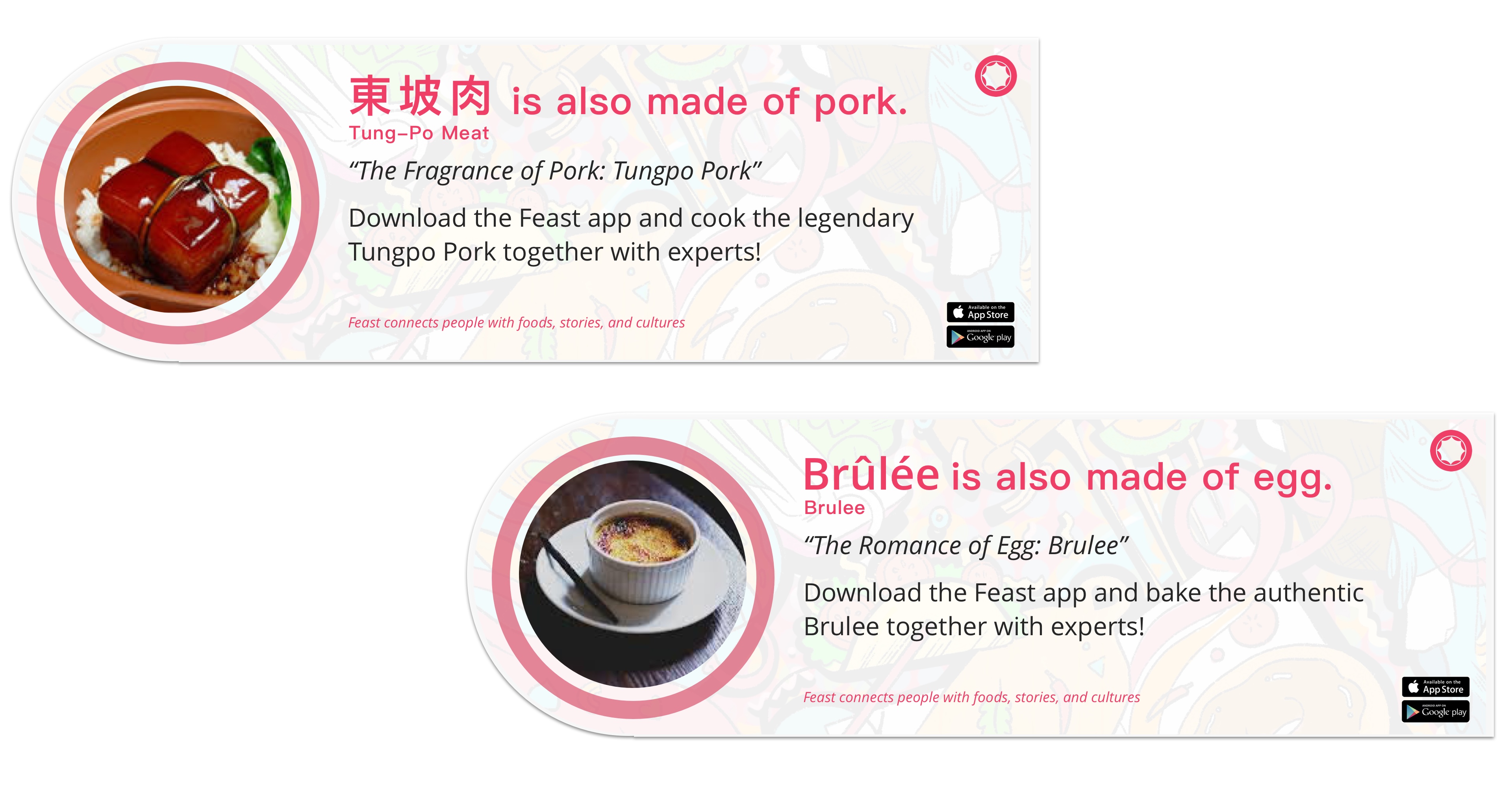
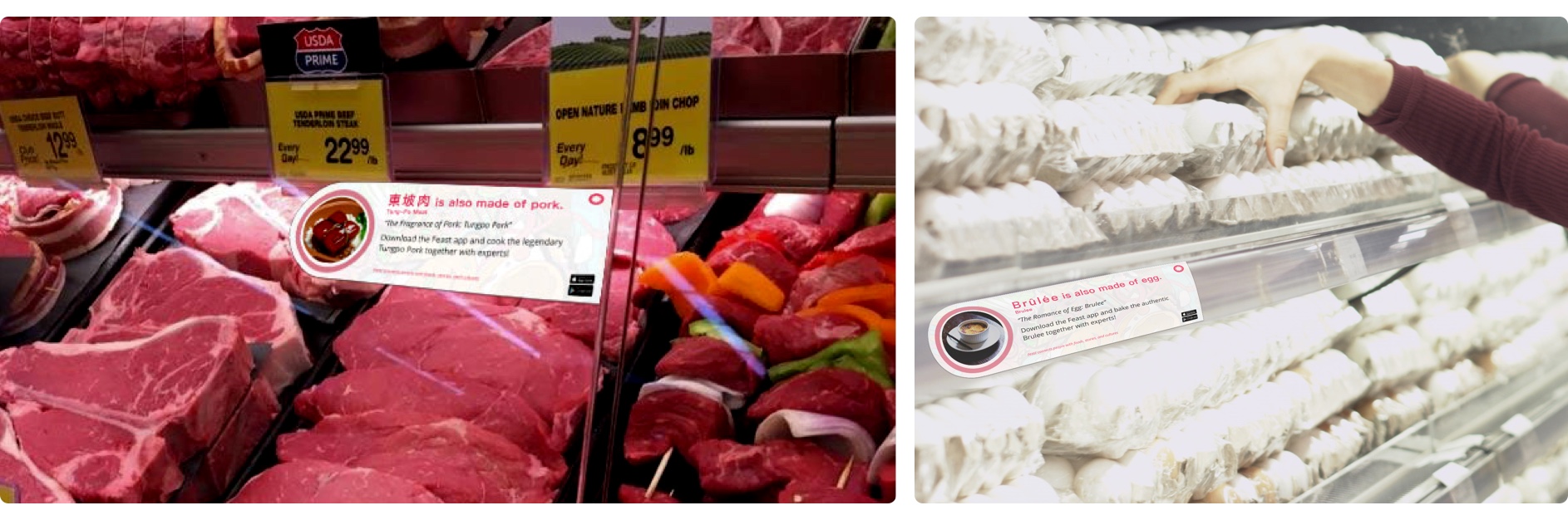
Emphasizing the main idea of "connecting people via foods, stories and cultures", I design a series of "We are connected by..." posters. The "object style (Sachplakat)" of these posters triggers audience curiosity and attracts their attention. Why eggs connect us? Because we all use this very same ingredient for cooking everyday. Every culture around the world, cooks with egg!
